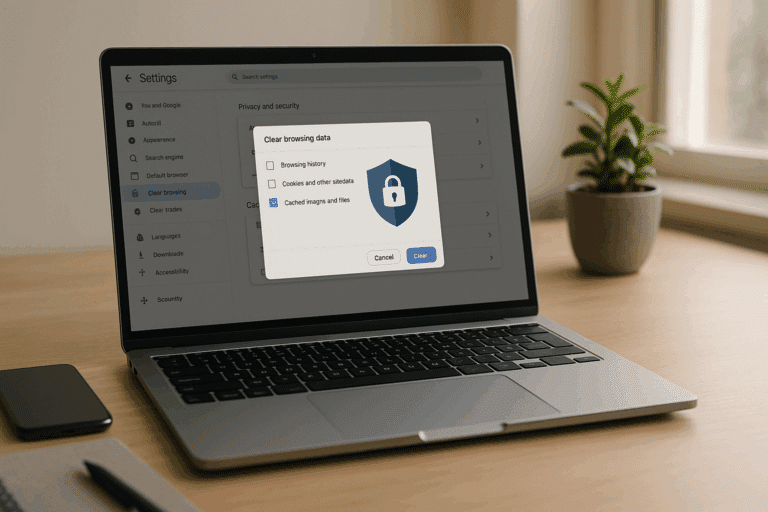What are they truly capable of, and what secrets might they be hiding? 💻🔒 If you’ve ever pondered these questions, you’re in the right place. This article aims to demystify the technical aspects of private browsing, shedding light on its intricacies and capabilities.
As we delve deeper into this digital phenomenon, we will explore its purpose, its effectiveness, and its limitations. So buckle up and prepare for an enlightening journey through the hidden layers of the world wide web. 🌐
Private Browsing: More Than Just a Stealth Mode
Firstly, we’ll touch on the fundamentals of private browsing. Contrary to popular belief, it’s not just a ‘cloak of invisibility’ for online activities. Its mechanics extend beyond just concealing your digital footprints. But how exactly does it work? What happens when you switch your browser to the so-called ‘Incognito mode’? We’re going to demystify these questions and more, to provide you with a complete understanding of this fascinating feature.
The Inner Workings of Private Browsing
We’ll take a closer look at the technicalities behind private browsing. It’s a common misconception that private browsing offers full anonymity and complete data protection. In reality, it’s a tad more complicated than that. We’ll break down the nuances, explaining what private browsing can and can’t do, and how it differs from using a VPN or Tor network.
Private Browsing and Data Security
Next, we’ll delve into the relationship between private browsing and data security. Is your data truly safe when you’re browsing privately? 🤔 We’ll examine this in detail, discussing how different browsers handle your data, and whether or not private browsing can protect you from the threats of cybercrime and data breaches.
Improving Your Browsing Experience
Finally, we’ll provide some practical tips on how you can use private browsing to enhance your browsing experience. Whether it’s keeping your browsing history clean or bypassing paywalls, private browsing can be a handy tool when used correctly.
By the end of this article, you will have a thorough understanding of private browsing, its pros and cons, and how to use it effectively to your advantage. Whether you’re a tech enthusiast or just a regular internet user seeking to enhance your online experience, this article will provide valuable insights that will fundamentally change how you perceive and use private browsing.
So, are you ready to unlock the secrets of private browsing? Let’s get started! 🚀
Understanding Private Browsing: An In-Depth Examination
Private browsing modes have become an integral part of today’s internet browsing experience. Despite their popularity, many people have misconceptions about what private browsing actually entails. In reality, the privacy offered by these modes is more nuanced than most people realize. This article aims to demystify private browsing by providing a detailed and comprehensive examination of its inner workings.
The main draw of private browsing is its promise of anonymity. However, it’s essential to understand that this anonymity is not absolute. While private browsing does shield your activities from other users of the same device, it does not necessarily make you invisible to websites, internet service providers, or potential hackers.
Let’s dig deeper into this matter and uncover the truth behind private browsing modes. We’ll start by comparing how different browsers handle private browsing, and then move on to exploring the extent of the privacy these modes offer.
Comparing Private Browsing Across Different Browsers
Most modern browsers offer a private browsing mode, but the specifics of what data is saved or discarded varies from one browser to another. To better understand these differences, let’s take a look at how private browsing works on three of the most popular browsers: Google Chrome, Mozilla Firefox, and Safari.
| Browser | Private Mode | Data Stored | Data Not Stored |
|---|---|---|---|
| Google Chrome | Incognito Mode | Bookmarks, downloads | Browsing history, cookies |
| Mozilla Firefox | Private Browsing | Bookmarks, downloads | Browsing history, cookies, cached web content |
| Safari | Private Window | Bookmarks, downloads | Browsing history, cookies, cached web content |
As you can see, all three browsers don’t store browsing history and cookies in private mode, making your activities invisible to anyone else who might use your device. However, your bookmarks and downloads are stored across all three browsers, which could potentially be accessed by others.
To get a more in-depth understanding of how private browsing works on Google Chrome, you can watch the video “Incognito Mode Explained” by Tech Insider on YouTube.
The Reality of Privacy in Private Browsing
While private browsing does provide a certain level of privacy, it’s essential to understand its limitations. When you’re using private browsing mode, your internet service provider (ISP), the websites you visit, and any malicious entities monitoring your network can still potentially see your activities.
Private browsing modes can protect you from local threats, such as other people using the same device who might snoop on your browsing history. They can also protect you from certain types of tracking cookies, which websites use to monitor your online activities and serve targeted ads.
However, they can’t protect your data as it travels over the internet. ISPs can still monitor your online activities, and websites can still record your IP address, which can potentially be used to identify you. Moreover, if a hacker is monitoring your network, they can potentially intercept your data, unless you’re using a secure connection (HTTPS).
Enhancing Your Privacy with VPNs and Tor
If you’re looking to enhance your privacy beyond what private browsing modes can offer, you might want to consider using a Virtual Private Network (VPN) or The Onion Router (Tor).
A VPN can encrypt your data, making it unreadable to anyone who might intercept it, including your ISP. It also hides your real IP address, making it more difficult for websites to track you. However, you have to trust your VPN provider, as they can potentially see your internet activities.
Tor takes privacy to another level by bouncing your internet traffic through multiple servers around the world, making it much harder for anyone to trace your activities back to you. However, it can significantly slow down your internet connection, and not all websites allow Tor traffic.
To learn more about how VPNs and Tor can enhance your privacy, you can watch the video “VPN vs Tor: Which is More Secure?” by The Hated One on YouTube.
Take Control of Your Online Privacy
In the age of digital surveillance and data breaches, online privacy has never been more important. While private browsing modes can provide a certain level of privacy, they’re not a magic bullet that can make you completely invisible online. It’s essential to understand their limitations and consider other privacy tools like VPNs and Tor if you need more protection.
Remember, the key to online privacy is awareness. By understanding how different tools work and what level of privacy they can offer, you can make informed decisions and take control of your online privacy.
So, go ahead and explore the world of online privacy. Don’t just rely on private browsing modes—equip yourself with the right tools and knowledge to truly protect your privacy online.

Conclusion
In conclusion, it is worth noting the critical role played by the concepts discussed in the understanding of modern software engineering and Information Technology. This article has attempted to break down the complex dimensions of these topics into digestible and understandable information. By doing so, we hope we have made it easier for you to comprehend the intricate workings of these technical areas.
The first point we discussed pertains to the fundamental principles of software engineering. As we explored, the discipline entails more than just coding. It integrates a series of systematic, disciplined, and quantifiable approaches to the development, operation, and maintenance of software systems. 💡 By adopting these principles, engineers can design robust, efficient, and versatile software solutions that meet the requirements of today’s dynamic digital environment.
We also underscored the importance of good programming practices in the software development process. As we elaborated, these practices enhance code readability, maintainability, and efficiency, thereby improving software quality and developer productivity. 👨💻👩💻 Moreover, they mitigate the risk of software bugs and security vulnerabilities, which can have severe implications for system stability and data integrity.
Furthermore, we delved into the applications and implications of emerging technologies such as artificial intelligence, machine learning, and cloud computing in software engineering. These technologies present novel opportunities and challenges for software engineers, necessitating continual learning and adaptation. As we highlighted, they are revolutionizing how we design, build, deploy, and use software systems, opening up exciting possibilities for the future.
Lastly, we examined the vital role of communication in the software engineering process. We noted that effective communication skills are essential for articulating technical concepts, collaborating with team members, and engaging with stakeholders. Thus, they contribute to the successful realization of software projects. 🗣️💬
The topics discussed in this article are highly significant, given the central role of software systems in our daily lives and the wider economy. Consequently, understanding these concepts is crucial for professionals in the software engineering and IT sectors, as well as anyone interested in these fields.
If you found this article insightful, do not hesitate to leave a comment, share it with your colleagues, or apply the knowledge gained in your work or studies. We are keen to hear your views and experiences. 🙋♂️🙋♀️ Furthermore, we encourage you to explore these topics further. Below are some reliable resources for your reference:
– IEEE Computer Society – Technical Committee on Software Engineering
– ACM SIGSOFT – The Association for Computing Machinery’s Special Interest Group on Software Engineering
– Software Engineering Institute – Carnegie Mellon University
Remember, the journey of learning is never-ending, and every step you take is a step closer to mastery. Keep learning, keep growing, and keep pushing the boundaries of what’s possible with software engineering and IT. 👨🎓👩🎓🚀



